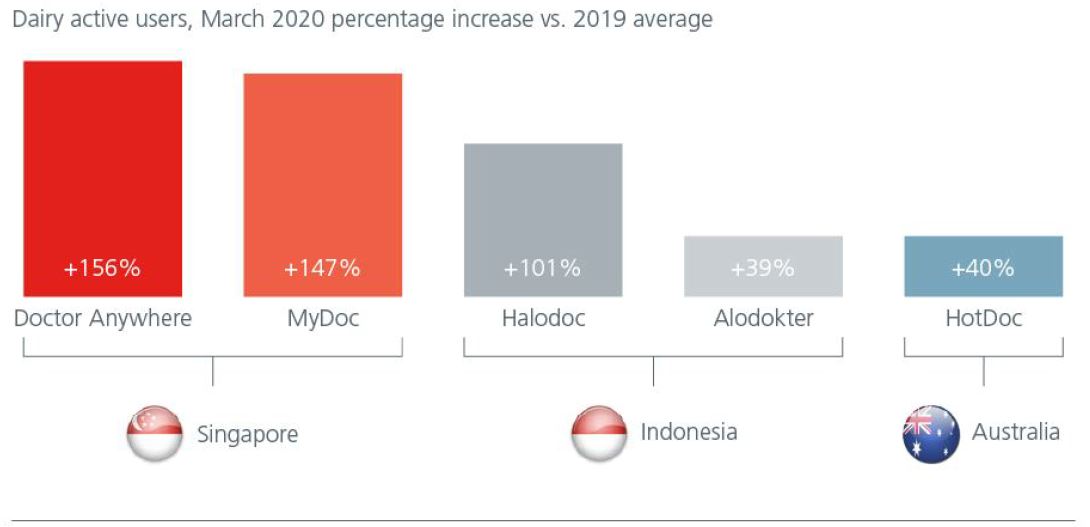OUTLINE:
1. Prioritization of COVID-related and non-elective Procedure Lead to the Reallocation of Procurement Budget on Medical Device
2. Strongly Increasing Demand on Personal Protective Equipment
3. Boost in Remote Technology and Online Healthcare Environment
4. New Opportunities and Challenges in Supply Chain
5. Post-COVID Forecast for Asia Pacific Region
COVID-19 has substantially affected the global economy and has influenced nearly all industrial sectors. Taking the turbulences caused by COVID-19 into account, the global demand for medical devices is nonetheless expected to reach a CAGR of 22% from 2019 to 2025, valued at USD 6170.72 billion by 2025. Yet, despite the overall positive long-term outlook and the number of medical device sectors that are experiencing a vastly increased demand, other areas are hard hit by the current situation.
Therefore, it is important to analyze and understand the occurring MD market shifts in greater detail. Qualtech gives you an overview of both the fields that benefited and those that were impaired by this pandemic. Also, we would like to introduce the new technologies that are evolving to face this harsh situation.
1. Prioritization of COVID-related and non-elective Procedure Lead to the Reallocation of Procurement Budget on Medical Device
As much as 80-90% decline in elective medical procedures was observed in China and Italy alone in February and March. It is expected that surgery volumes will reach 75% of 2019 volume by the end of Q3 2020 according to Global Data projects. A 10-20% above regular capacity is expected in early 2021 to catch up on these delays unless a second wave of COVID-19 occurs in Q4 2020. To allocate hospital resources for the treatment of COVID-19 patients, non-emergency elective procedures, including non-essential dental, orthopedic as well as aesthetic and cosmetic surgeries like breast implantation and lipoplasty, were postponed or canceled.
|
Indication |
Emergent |
Urgent |
Urgent elective |
Essential elective |
Discretionary elective |
|
Time frame for action |
< 1 h |
< 24 h |
< 2 weeks |
1–3 months |
> 3 months |
|
Example |
life-threatening emergencies, acute exsanguination, acute vascular injury or occlusion, aortic dissection, emergency caesarean section, compartment syndrome, necrotizing fasciitis |
acute appendicitis, septic arthritis, open fractures, bleeding pelvic fractures, femur shaft fractures |
cardiothoracic procedures, closed fractures, scheduled caesarean section, wound closure/skin grafts or flaps |
cancer surgery or biopsies, hernia repair, hysterectomy |
cosmetic surgery |
Figure 1: Overview of Surgical Case-Types Based on Indication and Urgency
Furthermore, hospitals had to prioritize equipment needed to treat, monitor, and diagnose COVID-19 patients such as PPEs, ventilators, respirators, X-ray and ultrasound equipment, and infusion pumps. The purchase of other capital and imaging equipment, such as MRI and mammography, on the other hand, are on hold. Hence, there will be a negative impact on the revenue of medical devices from $413.9 billion to $377.1 billion and $31.5 billion to $18.1 billion for imaging equipment.
2. Strongly Increasing Demand on Personal Protective Equipment
The global personal protective equipment market was valued at USD 43.9 billion in 2018 and has increased in market size to currently USD 53.2 billion in 2020. According to Research Dive, the global PPE market is expected to further grow and to surpass USD 93.5 billion by 2026, at a CAGR of 10.0%. One of the key markets for PPE is forecasted to be the Asia-Pacific region. Out of the 93.5 billion market size to be reached in 2026, the Asia-Pacific alone is expected to amount to USD 23.8 billion.
|
Globally Leading |
Australia |
Ansell LTD. |
|
USA |
Honeywell International Inc |
|
|
Belgium |
Sioen Industries NV |
|
|
Within the Personal Protective Equipment Markets |
USA |
KCWW |
|
USA |
DuPont |
|
|
USA |
3M |
|
|
USA |
MSA Safety |
|
|
USA |
Lakeland Industries, Inc. |
|
|
|
Canada |
Alpha Pro Tech |
|
|
USA |
Radians, Inc. |
Figure 2: Overview of the Leading Manufacturers for PPEs
3. Boost in Remote Technology and Online Healthcare Environment
Telemedicine or remote healthcare services have been around before the pandemic but are prominently utilized in under-resourced healthcare systems. These services include consultation with a health care provider via phone, video, or text messaging as well as the use of apps for testing and/or monitoring of vulnerable patients in their homes.
There was an increase of 300 % in telemedicine usage when comparing US data from March 15, 2019 - April 14, 2019, with that from March 15, 2020 - April 14, 2020 market. A similar trend, a 200 % increase, was also observed in KSA, UAE, and India during the pandemic. The main advantage of this kind of service is the reduced waiting time in hospitals because the patient needs were already pre-assessed, and timely guidance was provided for at-risk patients.
India’s integrated health platform 1mg experienced a surge during the pandemic, because of their online pharmacy and at-home sample collection for lab tests in addition to online doctor consultation. It is evident that such a one-stop solution has a strong appeal to customers
Figure 3: Increase in Telemedicine Usage in the Asia-Pacific Region(Source: similarweb)
Some sectors, however, will still need to see patients in person and utilize telemedicine primarily for initial contact with patients, such as ophthalmology chains, where the examination cannot be done off the clinic.
Telemedicine will continue to grow along with the technology that will expand the reach of this sector. Nevertheless, the main challenges for its growth will be addressing patient data privacy, its inclusion in health insurance coverage, training of physicians, and the inherent limitations of existing platforms.
4. New Opportunities and Challenges in Supply Chain
Because of the supply chain interruptions for numerous medical devices primarily due to lockdowns and export restrictions, there are new sets of opportunities and risks that need to be managed to continue business operations. Manufacturers are now looking into further integration of robotics and automation to the production processes. While India is currently at the forefront of this approach, increasing the use of robotics and automation in production processes will be necessary for the future as the demand for medical devices globally is ever-growing.
On the other side, shifting to a virtual and on-line environment increased the risk of fraud and cybercrime and vulnerability of workers to mental health issues. Changing regulations must also be watched out for to remain legally compliant and avoid later sanctions. Business models, financial forecasts, short-term goals, and even labor shortage also need to be adjusted.
Source: Qualitymag
Post-COVID Forecast for Asia Pacific Region
The healthcare IT sector is also expected to grow from USD 12.2 billion in 2019 to USD 14.9 billion by 2022. Currently, China, Singapore, and Australia are the top spenders in this field. Besides China and Singapore, India is also gaining traction into becoming a health tech hub. Gaps in the healthcare systems will drive the market growth for countries that have under-invested in their healthcare systems in the past years. Indonesia, for example, has to cope with its investment in bed capacity, medical workers, and hospital infrastructure.
China is still the world’s biggest manufacturing hub but some regions in Asia are also proving their ability to deliver. Malaysia holds a 65% share in the manufacture of nitrile and latex medical gloves and continues to lead in the production efficiency in this area. It is also a highly attractive procurement center for the raw materials for making catheters, syringes, needles, and X-ray apparatus. India is also pushing for the domestic production of health-related products.
Resources:
- NS Medical Devices: Impact of COVID-19 on the MD Markets
- MedGadgets: COVID-19 Impact Analysis
- Research Dive: PPE Market Impact by COVID-19
- EastSpring Investment: Asian Healthcare
- KPMG: 19 COVID-19 Risks: insights into a changed risk
- MPO:Navigating COVID-19 and Its Impact on the Medical Device Landscape
- DAIC:Top 5 Predictions for the Global Healthcare Industry Post COVID-19
- World Bank Blogs: After coronavirus, telemedicine is here to stay
- National Center for Biotechnology Information


